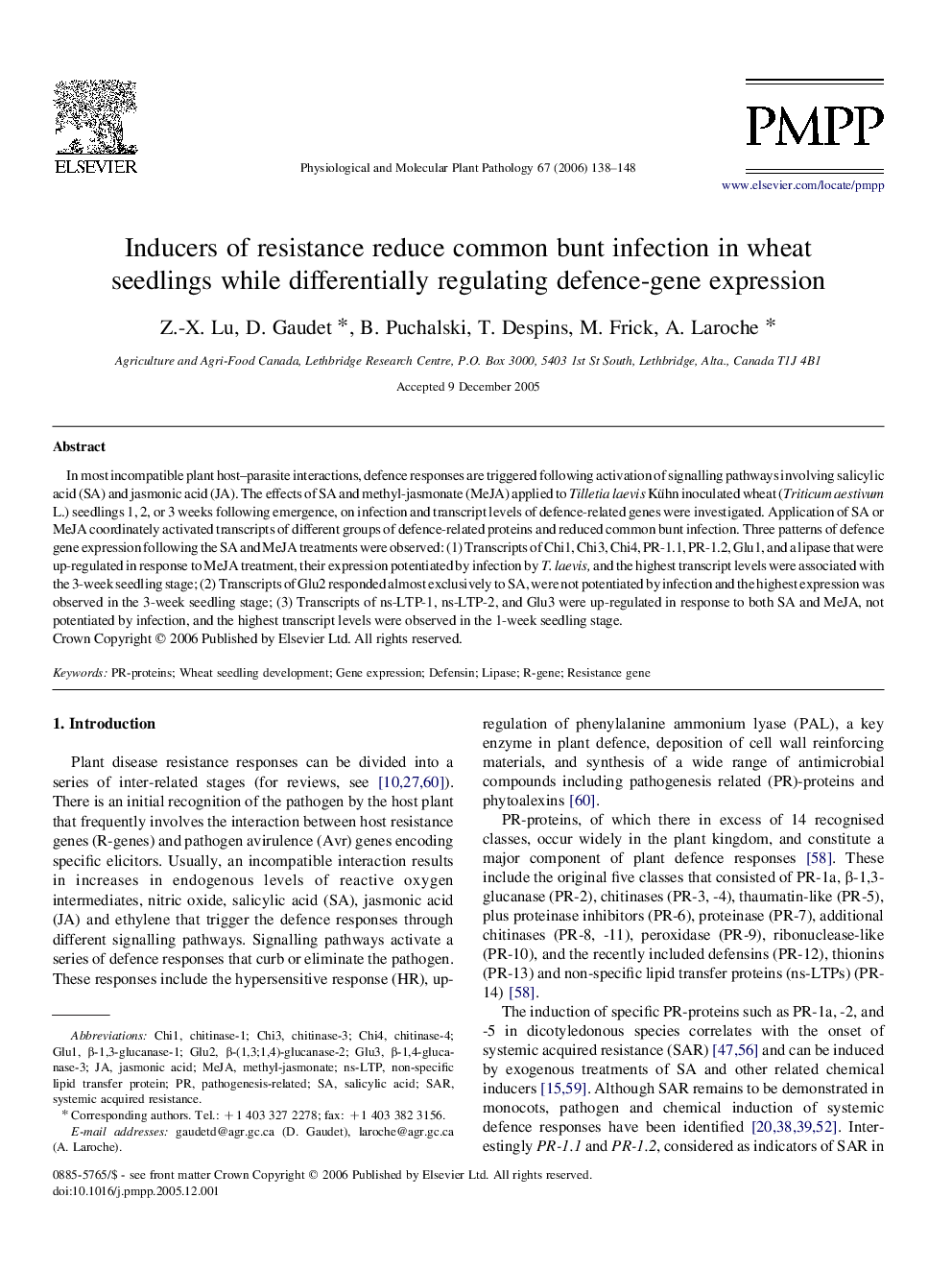| Article ID | Journal | Published Year | Pages | File Type |
|---|---|---|---|---|
| 2836836 | Physiological and Molecular Plant Pathology | 2006 | 11 Pages |
In most incompatible plant host–parasite interactions, defence responses are triggered following activation of signalling pathways involving salicylic acid (SA) and jasmonic acid (JA). The effects of SA and methyl-jasmonate (MeJA) applied to Tilletia laevis Kühn inoculated wheat (Triticum aestivum L.) seedlings 1, 2, or 3 weeks following emergence, on infection and transcript levels of defence-related genes were investigated. Application of SA or MeJA coordinately activated transcripts of different groups of defence-related proteins and reduced common bunt infection. Three patterns of defence gene expression following the SA and MeJA treatments were observed: (1) Transcripts of Chi1, Chi3, Chi4, PR-1.1, PR-1.2, Glu1, and a lipase that were up-regulated in response to MeJA treatment, their expression potentiated by infection by T. laevis, and the highest transcript levels were associated with the 3-week seedling stage; (2) Transcripts of Glu2 responded almost exclusively to SA, were not potentiated by infection and the highest expression was observed in the 3-week seedling stage; (3) Transcripts of ns-LTP-1, ns-LTP-2, and Glu3 were up-regulated in response to both SA and MeJA, not potentiated by infection, and the highest transcript levels were observed in the 1-week seedling stage.
